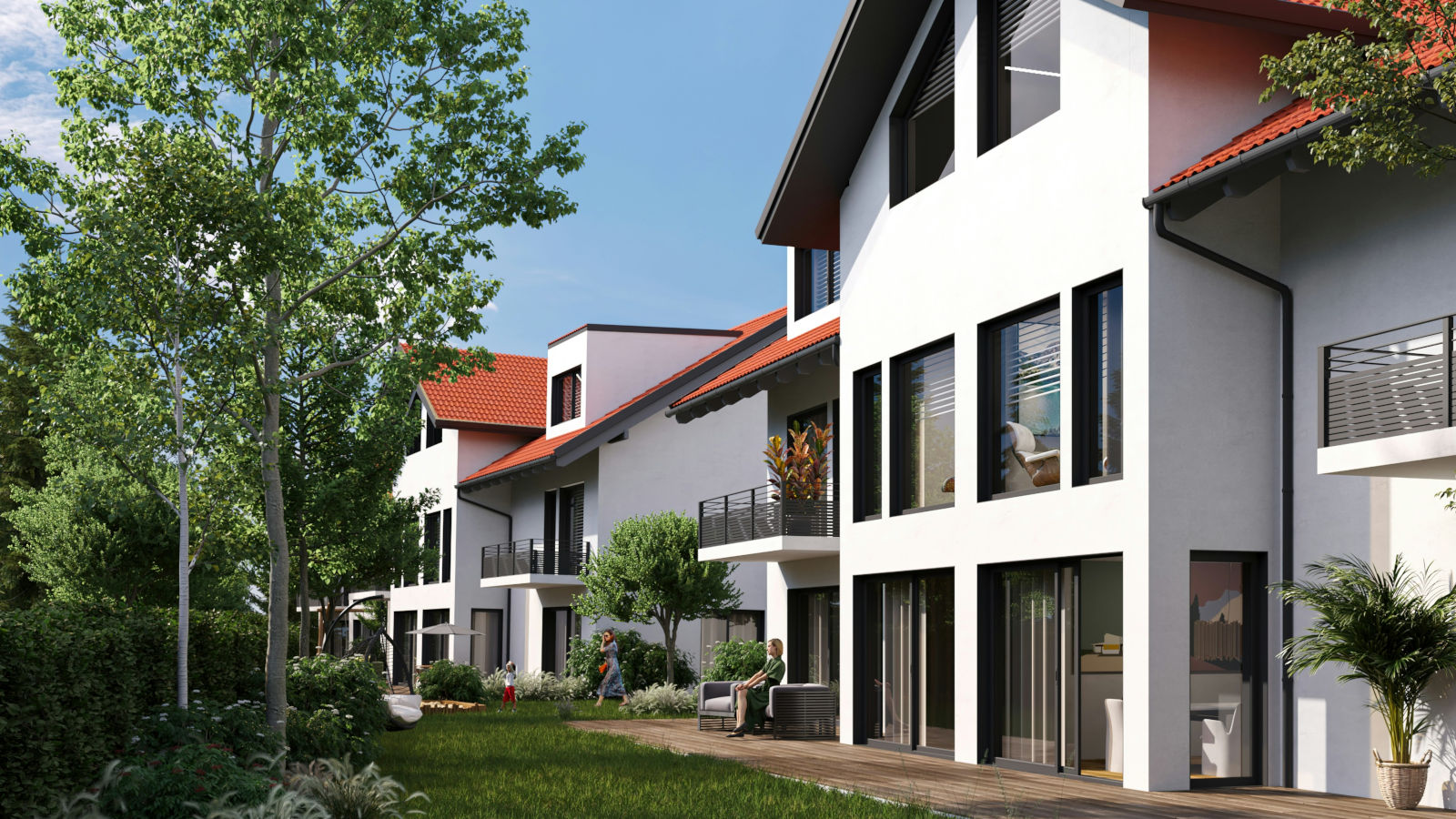
At the last 98th EUROCONSTRUCT Conference in Winter 2024, the spotlight was firmly on Europe’s deepening housing crisis. Despite growing populations and high migration, new housing supply is falling sharply in many countries – fuelling rising rents, affordability challenges, and political urgency. A renewed policy focus, including the EU’s first Commissioner for Housing and major national initiatives, signals housing’s elevated place on the European agenda. But with demand far outpacing supply, real solutions will require coordinated investment, reform, and innovation across the continent.
Housing is now a major issue, with a significant shortage in many countries, despite a renewed focus following political elections across many countries in the EUROCONSTRUCT area.
My presentation on the prospects for the European Housing market at the 98th EUROCONSTRUCT Conference in December 2024 highlighted a number of specific challenges for housing, notably real concerns about shortages of new housing supply in some countries despite strong population growth and significant inward migration. The overall level of housing completions was expected to decline by 13.1% across the 19 member countries of EUROCONSTRUCT over the period 2021-2024, with declines expected in 15 countries, including Sweden (54.5%), Finland (45.5%), Denmark (28.8%), Norway (23.5%) and Austria (22.2%). [1] Many factors were responsible at the time, including the escalation in interest rates since mid-2022, albeit now moderating, the rising cost of construction, affordability and viability issues, and excessive regulations. Over the next two years, the prospects for new supply were reported to be equally poor in countries like Germany (-30%), Austria (-24.5%), France (-16.8%) and Italy (-7.9%), where further declines were forecast. The consequences are such that the shortage has adversely impacted rents and house prices, with the result that housing is now a major economic, social and political issue in many countries.
Given the difficult situation in many countries, the growing concerns about the lack of supply of affordable housing and the affordability issues across many cities in Europe has led to a renewed focus on housing policy to address the increasing housing challenges which have emerged over recent years. This is evident in many of those countries that have had elections over recent months. Yet, the increasing gap between actual supply and the housing requirement remains an ongoing challenge in many countries across the EUROCONSTRUCT area.
Firstly, it is noted that the European Commission appointed the first European Commissioner for Housing in December 2024, Mr Dan Jorgensen, who will now have responsibility for energy and housing. His key task is the delivery of a “European Affordable Housing Plan”, which is expected to address the root causes of the housing shortage, offer construction solutions, and increase investment in the sector. The Plan will include a Pan-European investment platform, which is intended to attract both public and private investment in affordable and sustainable housing projects, utilising a blend of funding sources to accelerate home construction and alleviate the shortage, with the support of the European Investment Bank. This indicates the elevated importance of housing on the EU agenda.
There were seven parliamentary elections across the EUROCONSTRUCT region over the past fifteen months, in Germany, Ireland, Austria, France, the UK, Belgium and Portugal. With many putting housing at the centre of their election campaigns, it has transpired that elections have significantly influenced housing policies, and have led many governments to enhance their efforts to address their housing situation.
Following the most recent election in Germany, the new government has approved a draft bill allowing for the establishment of a €500 billion infrastructure fund over a 12-year period to modernise the country’s infrastructure network. There is an expectation that more funding will be provided for housing. However, Germany is facing a housing shortage, with the previous government’s promise in 2022 to build 400,000 new homes per year – 100,000 of which should be social housing – unfulfilled. A recent study commissioned by the Housing Ministry (published 20 March 2025) stated that Germany needs to build 320,000 new apartments each year by 2030, with the need considered to be high in cities like Berlin, Munich and Frankfurt. This compares with total completions of 255,000 in 2024, a year in which the number of new permits is reported to have declined for three years in a row.
The Table below illustrates the countries which have a severe housing shortage, particularly across many urban areas (for countries where governments have published housing targets). It also shows how the annual requirements published fall far short of the level of housing completions in 2024, and as noted, against a weak supply picture over the 2021-2024 period. The situation is particularly challenging in Portugal, Sweden and Spain where the average annual housing requirement is around two or more times the level of supply in 2024.
The demise of the minority government in Portugal in March followed the launch of an investment plan worth €2 billion to construct around 33,000 homes by 2030, targeting low-income families. To address the ongoing housing crisis, however, estimates suggest that annual housing production needs to triple, reaching approximately 70,000 new homes per year by 2029.
Despite elections in Belgium in May 2024, there is no plan concerning the housing need in Belgium, while we understand the topic is currently under discussion in Italy, where there are significant affordability problems.
The return of a majority Labour Government in the UK in July 2024 saw the Prime Minister, Sir Keir Starmer, reiterate his commitment to build 1.5 million new homes by 2030, which in annual average terms is almost 1.5 times the level of supply in 2024.
In Ireland, where housing has been at the top of the political agenda for almost a decade, the new Programme for Government contains substantial housing commitments to build on the progress achieved under the previous government’s Housing for All Plan by introducing a new, fully funded, ambitious yet practical housing plan to increase the construction of homes. The Government is to prioritise supporting home ownership, and states that it will deliver more homes, starter homes and social housing, as well as introduce practical housing options for positive ageing, and rural housing. Nonetheless, the shortfall is significant with the updated requirement set at an average of 50,500 new homes to 2030, despite many challenges, to do with planning, viability and the availability of funding.
In Hungary, where there is an increasing gap between accelerating demand and the sluggish pace of new supply, which is putting pressure on house prices and limiting affordability, the housing requirement is almost twice the supply outturn in 2024.
Poland has faced a growing housing crisis in recent years, with estimated shortages of up to two million units. The Government has approved a new housing program, Key to Housing, which aims to deliver 15,000 new social and municipal apartments in its first year, with an annual target of 40,000 units by 2030. However, there is no overall requirement published across all tenures.
In conclusion, the housing situation in many countries across the EUROCONSTRUCT area is very challenging and affordability remains a critical issue across many European cities. Significant more supply is needed which will require increased construction capacity, a more streamlined planning system, more construction workers, access to funding and more sustainable construction practices. Governments are endeavouring to implement policies to encourage the construction of affordable housing and rental units to address the severe housing shortage and affordability issues. The elevated importance of housing at an EU level is welcomed and it is hoped that member states will be supported over the medium-term in their efforts to tackle the housing supply shortage effectively to achieve the desired result.
Table 1: Estimated housing supply in 2024 and average annual requirement of new homes to 2030
| Completions, Estimate 2024 in thousands | Average Annual Requirement to 2030 in thousands | Date of Parliamentary Elections in 2024/2025 |
|
|---|---|---|---|
| Austria | 46.3 | Sep-24 | |
| Belgium | 49.8 | May-24 | |
| Denmark* | 29.5 | ||
| Finland* | 21.1 | 37.0 | |
| France | 318.3 | 400.0 | Jun & Jul-24 |
| Germany* | 255.0 | 320.0 | Feb-25 |
| Ireland* | 30.3 | 50.5 | Nov-24 |
| Italy | 97.5 | ||
| Netherlands* | 69.1 | 100.0 | |
| Norway | 21.7 | ||
| Portugal* | 24.6 | 70.0 | Mar-24 |
| Spain* | 96.5 | 184.0 | |
| Sweden* | 27.3 | 52.3 | |
| Switzerland | 44.2 | ||
| United Kingdom | 178.6 | 250.0 | Jul-24 |
| Czechia | 37.4 | ||
| Hungary* | 13.5 | 25.0 | |
| Poland* | 200.4 | ||
| Slovakia* | 17.6 | ||
| EUROCONSTRUCT, EC-19 | 1,578.7 |
Finland: The official requirement of 37,000 new homes is considered too high, with other projections suggesting the annual need is more like 29,000 to 2030.
Ireland: Revised targets by Government show that the requirement has increased from 33,000 per annum to 50,500 per annum to 2030.
Netherlands: The undersupply to date is giving rise to a need closer to 120,000 per annum 2025-2030.
Spain: The Plan ends in 2025, but the horizon for these 184,000 homes is mid-term.
UK: Sir Keir Starmer reiterated his commitment to building 1.5 million new homes by 2030.
Slovakia: There is no Housing Plan available but based on Slovakia’s housing stock (426 dwellings/1,000 persons) being in line with the EC-15 average (525), Slovakia would need an additional 540,000 dwellings.
The above information was taken from a number of sources, including from EUROCONSTRUCT members. The gaps reflect where either housing plans are not available or the information could not be ascertained.
ABOUT THE AUTHOR
Annette Hughes
EY Economic Advisory, EY Ireland
Annette Hughes is EY Ireland Economic Advisory Services Director and Irish member of the EUROCONSTRUCT network. She is a skilled advisor, strategist, and consultant in construction-related areas. In her previous role as a Director at DKM Economic Consultants, her involvement in DKM's studies of national and regional housing markets for clients including financial institutions and house builders, brought about significant change in the industry.
[1] Based on 98th EUROCONSTRUCT projections for housing completions, December 2024.
Receive the latest information on the European housing market at our next construction market forecasting conference.
99th EUROCONSTRUCT-Conference
EUROPEAN CONSTRUCTION MARKET FORECASTS TOWARDS 2027
Warsaw, Poland
5 & 6 June 2025
ABOUT THE AUTHOR
Annette Hughes
EY Economic Advisory, EY Ireland
Annette Hughes is EY Ireland Economic Advisory Services Director and Irish member of the EUROCONSTRUCT network. She is a skilled advisor, strategist, and consultant in construction-related areas. In her previous role as a Director at DKM Economic Consultants, her involvement in DKM's studies of national and regional housing markets for clients including financial institutions and house builders, brought about significant change in the industry.
